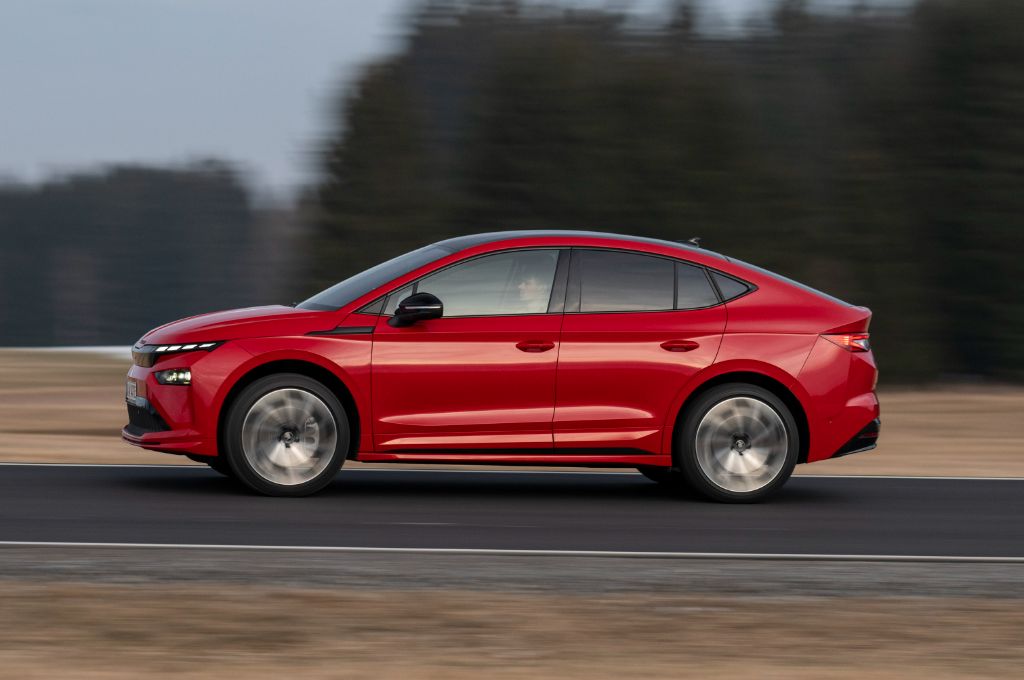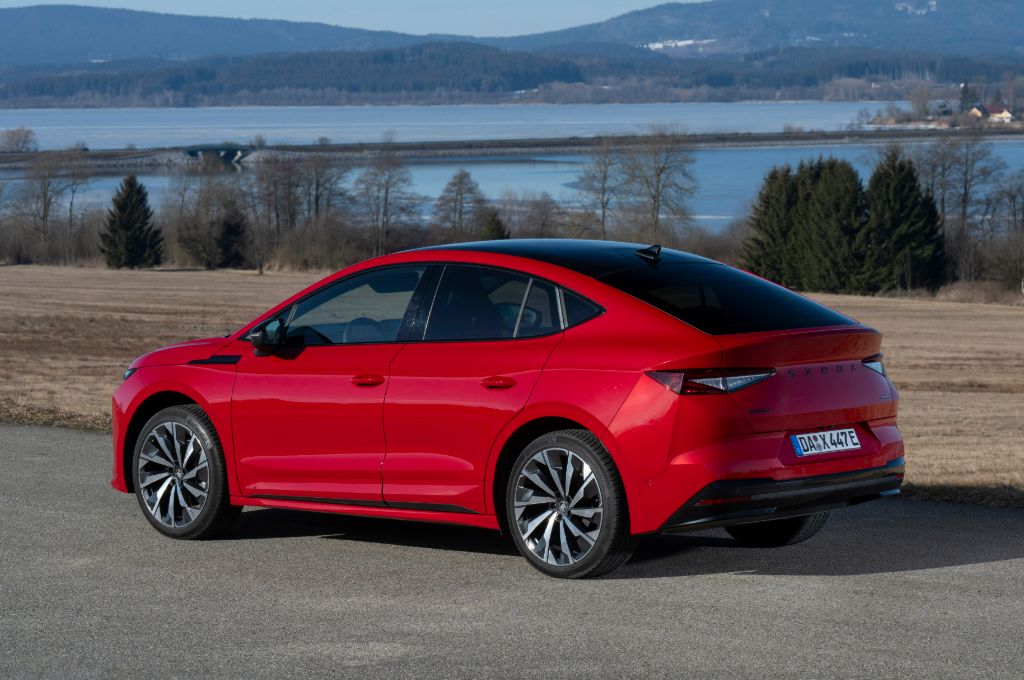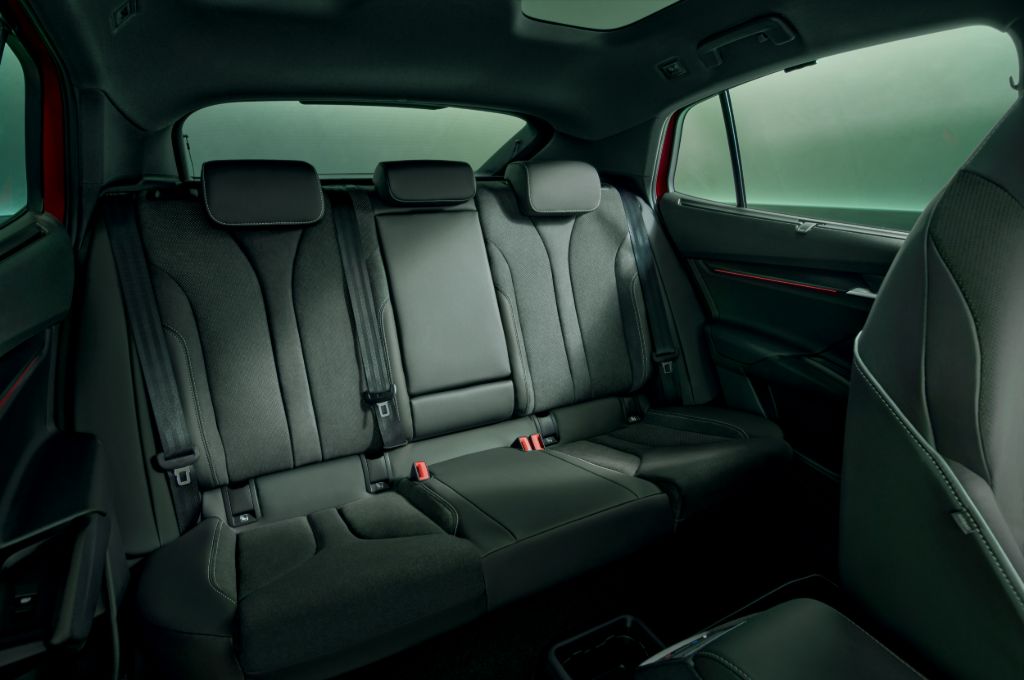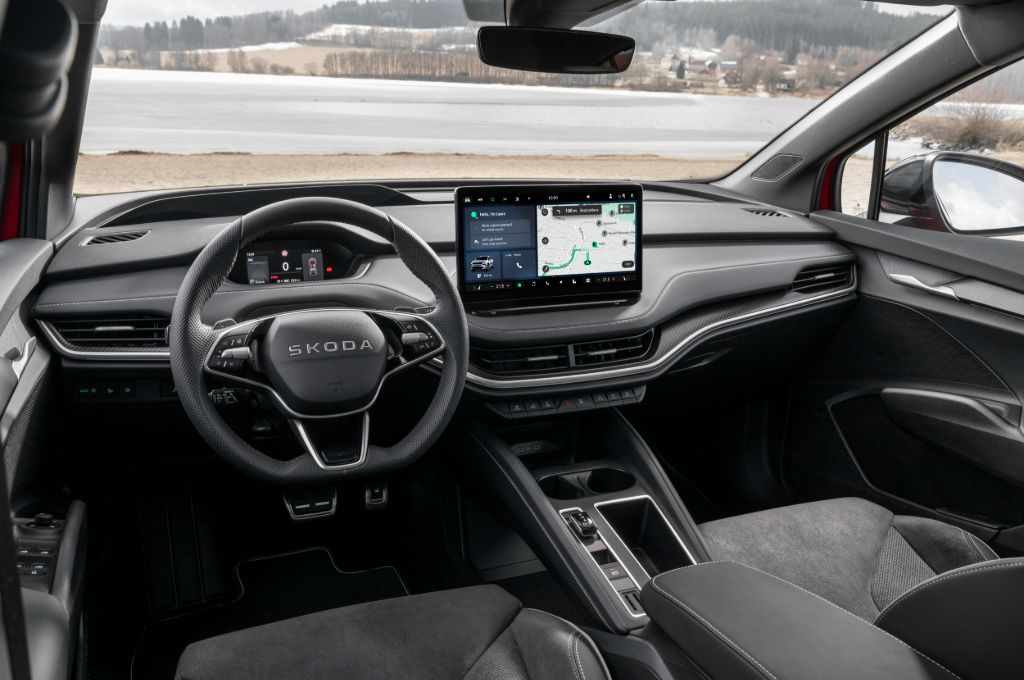2025 Skoda Enyaq Coupe – Introduction
Okay, so this isn’t an all-new Enyaq, it’s officially a facelift. It mainly focuses on style and equipment, because all the important bits underneath were changed last year. The Enyaq SUV gets a wider range of batteries and drivetrains, but the Enyaq Coupe is the range-topper, and so is only available with the big, 77kWh battery and 282bhp, although you can choose from rear-wheel drive in the Skoda Enyaq Coupe 85, or four-wheel drive in the 85x. Both manage 0-60mph in 6.5 seconds.
Being the fanciest version of the Enyaq lineup, the coupe is only available in full-fat Edition or Sportline trims, which means that you get tons of equipment but you’re paying some £46 - £50,000 (roughly £2,000 more than the equivalent SUV), so it does make the rest of the Enyaq range look pretty good value. There will also, of course, be a hot, Skoda Enyaq Coupe vRS model joining the range soon.

The Enyaq Coupe gets Skoda’s new “Modern Solid” design language, which involves having the smoother fascia and gloss grille, a sleeker look generally – and the badge has gone from the front of the car in favour of having ‘Skoda’ written in discreet font on the bonnet.
I reckon it looks pretty cool, and that sweeping roofline of the Coupe does give it a much sportier appearance, which is the whole point of it, really!
Check out the approved, used electric Skodas for sale on Electrifying.com
Obviously, the Enyaq has stayed much the same size as before, which means that it's just under 4.7m long; a very similar size to the VW ID.5 (which shares the same underpinnings), Kia EV6 and Ford Mustang Mach-E.
We haven’t driven the Enyaq Coupe just yet, unfortunately, but you can read our full driving impressions of the 2025 Skoda Enyaq 85 SUV that shares all of its important mechanical bits. Or, we’ve spent loads of time poking around the interior of the Enyaq Coupe, so read on to find out everything you need to know about this slinkier coupe version of Skoda’s popular family electric car.
Range, Battery and Charging
We've already mentioned the 2025 Skoda Enyaq Coupe's lithium-ion battery, which gets a usable capacity of 77kWh and a total capacity of 82kWh (every electric car battery keeps a few dormant cells that you can’t actually charge and discharge, as it helps to improve longevity and charging performance). Confusingly, it’s badged the Enyaq Coupe 85… I assume just to further confuse journalists and buyers alike.
That battery delivers a WLTP range of 334- to 365 miles depending on whether you go for four- or rear-wheel drive variant, making the Coupe the longest range Enyaq model on offer.

As for charging, the Skoda Enyaq Coupe 85 and 85x can charge at up to 175 kW, which is very competitive with rivals like the Ford Mustang Mach-E, if a way off the Kia EV6 and Tesla Model Y. It’ll be more than fast enough for most people, though, as it will enable a 10 to 80% charge in 24 minutes, or can deliver 100 miles of additional range in around 10- to 15 minutes.
One feature I really like is the battery preconditioning. This clever tech heats the battery before rapid charging, resulting in a much higher charging speed. You can also manually activate it without having to plug your planned charging stop into the car’s native nav system. This is very useful as I (like most of you, I expect) prefer to use Google Maps or Waze via the Apple CarPlay or Android Auto phone mirroring, which is great unless you want to preheat the battery for a charging stop. Now, the manual pre-heat option means that’s not an issue. Hurrah!
What is disappointing is that the Enyaq doesn't get bi-directional charging (like the Hyundai Ioniq 5 and Kia EV6). You also have to pay around £1,000 extra to get a heat pump, which will improve your winter range.
Practicality and Boot Space
There’s tons of space in the back seats despite that raked coupe roofline. Just as there was before, all but the very tallest of adults will be able to stretch out in the Enyaq Coupe, and enjoy the plentiful space and (by the standards of coupe-like SUVs) airy-feeling cabin. There are also two, new high power USB-C ports to keep all those devices powered up. If you don‘t have kids, trust me when I tell you what a joy those are to have in a family car.

As for boot space, the coupe version of the Enyaq gets 570-litres of boot space, which makes this one of the most practical electric SUVs you can buy. Let's hear it for the colossal boot in the Enyaq! The SUV version offers 585 litres of space with the seats up (unchanged from before) and a whopping 1,710 litres with the back seats folded. The Coupe isn’t far behind, with 570- and 1,610 litres. That means that the Enyaq Coupe remains one of the best family SUVs out there for luggage space – and is better than plenty of more traditional, boxy SUV alternatives. You can add a tow bar, too, which is useful for rear-mounted bike carriers, or for towing a braked trailer of up to 1200kg.
Interior, Design/Styling and Technology
Inside, the new Skoda Enyaq Coupe is as lovely as it always has been. I really do think that the Enyaq feels classier, and has better usability. It’s just a lovely place to spend time.
So, what's new? The steering wheel is new and has ‘Skoda’ spelled out, rather than the badge. I don’t really know why, but somehow that does look classier and more chic. More importantly, the steering wheel is heated on all models now. I love a heated steering wheel, so this makes me very happy.
The touchscreen infotainment system has had a further tweak with some nice features added. The screen itself is 13-inches and is placed up high, centrally on the dash. There’s also a 5.0-inch digital display ahead of the driver (none of this speedo on the central touchscreen stuff, as you get with the Tesla Model Y).

Running Costs and Pricing
The Enyaq has had a boost in standard equipment for this 2025 facelift. There are two trims available – the rear-wheel drive 85 is only offered in Edition trim, and the all-wheel drive 85x is only available in range-topping Sportline. Both get three-zone climate control, blind spot warning, keyless entry, adaptive cruise control and LED Matrix headlights (which give you high-beam illumination without dazzling oncoming traffic). The Enyaq Coupe 85x Sportline the most expensive Enyaq you can buy, short of the vRS, and is complete with a head-up display, progressive steering, sports suspension.
But how much does it cost?! Well, the Enyaq Coupe 85 is only available in Edition trim, at around £46,000, while the 85x comes in Sportline trim and costs a rather punchy £49,985. That’s not cheap, but next to the new Tesla Model Y, Kia EV6 and Peugeot e-3008 it’s still decent value.
2025 Skoda Enyaq Coupe - Verdict
We’ll have to wait until we’ve driven the facelifted Skoda Enyaq Coupe before delivering a final verdict, but going on our experience of the new SUV (and of our drive in the 2024 Enyaq Coupe that adopted the new running gear), the way it drives isn’t going to be a problem. Of course, I do wish that the heat pump was standard, and that Skoda had managed to include vehicle-to-load charging. But with these latest updates, and those that made it into production in 2024, the Enyaq Coupe is a great all-round. I’d personally stick to the standard Enyaq SUV as I’m not fussed enough about the slicked-back styling to pay the premium. But if you fancy the sportier-looking, more attention-grabbing version of the Enyaq, I reckon this 2025 update will be everything you want it to be.




























 PV5_Cargo_Key visual image_2.png?width=300&height=185)

